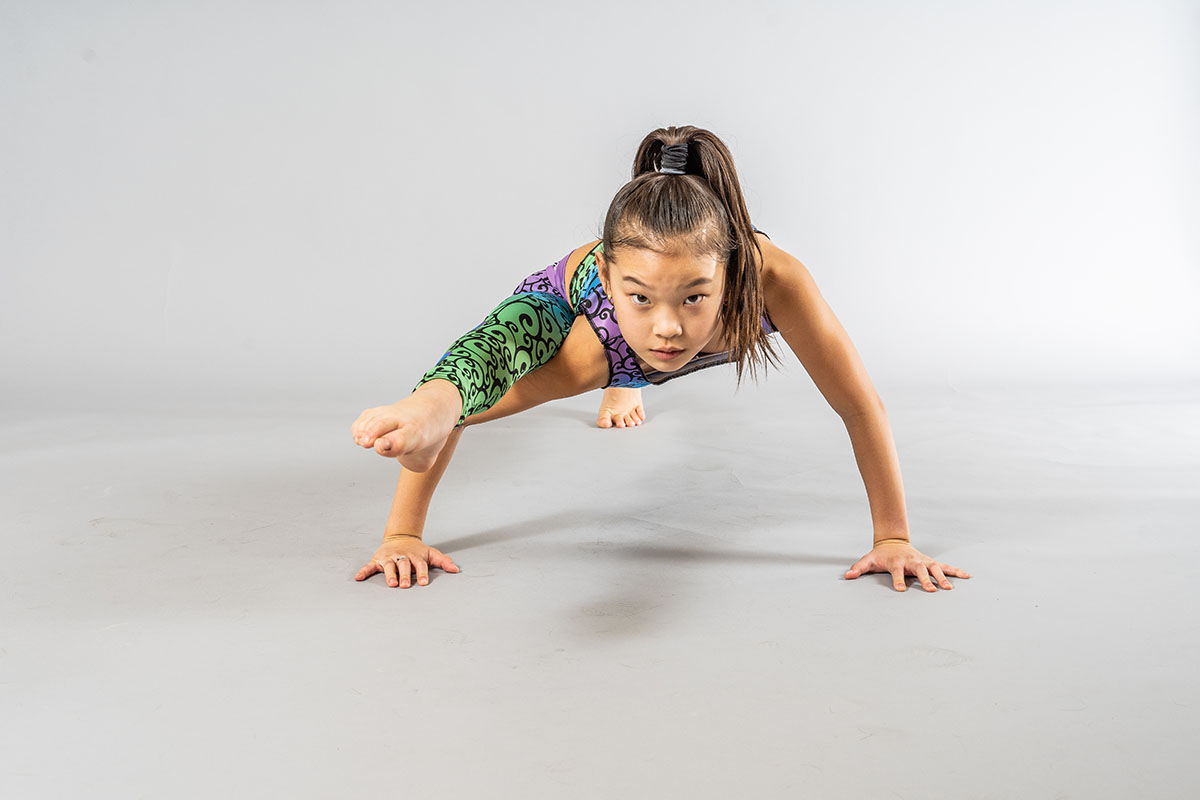Photos on Pointe
Stephanie Elie captures young dancers with the Tamron 28-75mm F/2.8 RXD.
More Photo Tips | Video Gallery | Photo Gallery | Enewsletter sign-up
By Jenn Gidman
Images By Stephanie Elie
Stephanie Elie had long tapped into her Tamron SP 24-70mm F/2.8 VC lens for the portraits she captured with her Canon camera, but when she got her hands on the Sony a7III full-frame mirrorless camera, her attention immediately turned to Tamron's 28-75mm F/2.8 RXD lens, designed specifically for her Sony purchase.
"I needed a zoom for my new camera that would be comparable in focal-length range to my previous lens," Stephanie says. "I used the 28-75mm for a series of photos I took of some young dancers, and I was really impressed with how crisp and sharp the photos came out, even when I was shooting handheld for the outdoor shots."
The 28-75mm, designed to be compact and lightweight (19.4 oz.) to take advantage of the mobility that mirrorless cameras offer, is also compatible with many of the features tied specifically to mirrorless units, including Fast Hybrid and Eye AF, Direct Manual Focus (DMF), and in-camera lens correction. An all-new high-speed precision AF drive system with an RXD (Rapid eXtra-silent stepping drive) motor helps keep things quiet.
Read on for more on Stephanie's photo shoot, where she used the 28-75mm to capture every leap, kick, and split in front of her lens.
*****
I took the indoor photos at my home, in an entryway with high vaulted ceilings that reach up to the second floor. I had three strobes: one exclusively to freeze the motion of the dancer, and the other two bouncing off the sides of the gray paper backdrop I was using. The strobes had remote triggers, with the main light triggering the other two.
I used just natural light for the outdoor photos, which I took on a nearby college campus. My main challenge in that environment was finding a place to shoot where there wasn't direct light, because the light was pretty harsh that day. A partly shaded area near a group of trees ended up working out well.
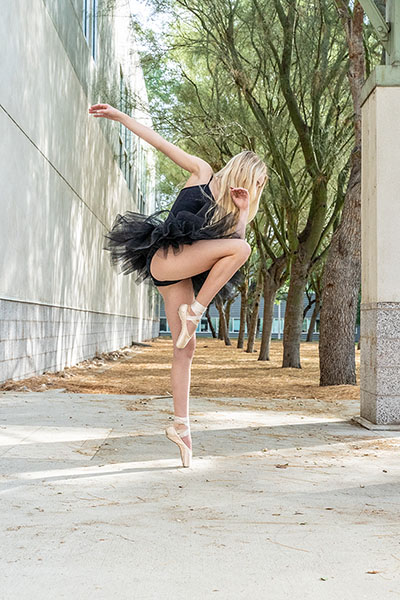
52mm, F/8, 1/1,000th sec., ISO 3200
Click image to view larger
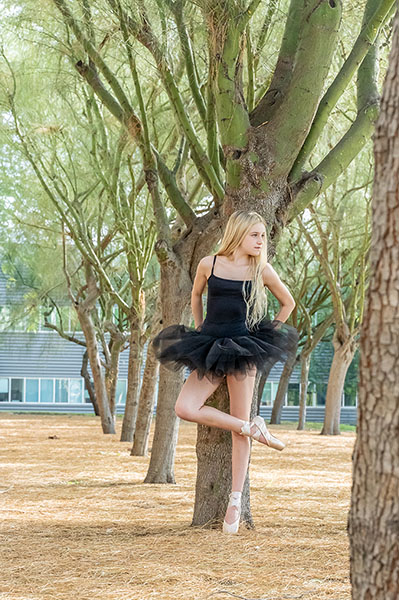
75mm, F/8, 1/1,000th sec., ISO 6400
Click image to view larger
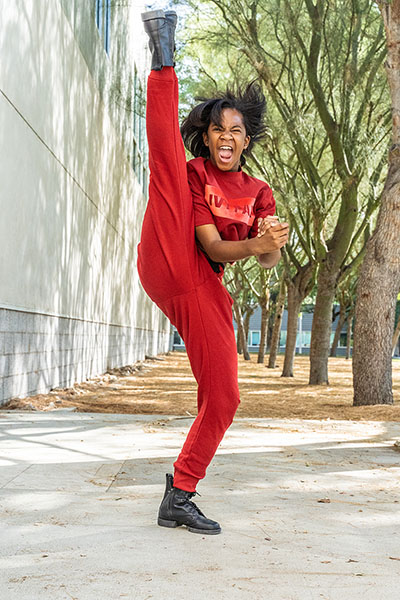
55mm, F/8, 1/1000th sec., ISO 3200
Click image to view larger
For two of the girls, the sessions took about 40 minutes each (the ballerina's dad was actually waiting in the car, so I had to work fast!), while Caitlin, the girl in the patterned dance outfit, posed for me for about an hour and a half. She was amazingly flexible and super-energetic. She had just come from a five-hour rehearsal, but she didn't lose her focus or energy for the entire shoot.
I'd decided I wanted to keep their outfits as simple and clean as possible so the viewer's eye would be focused on their movements and poses, not necessarily on what they were wearing. The dancers each came with a bunch of outfits, and we just chose from those options. Caitlin, however, really wanted to wear that multicolored outfit, so I acquiesced on that one. I wanted her to be happy so she'd be a good subject during the shoot.
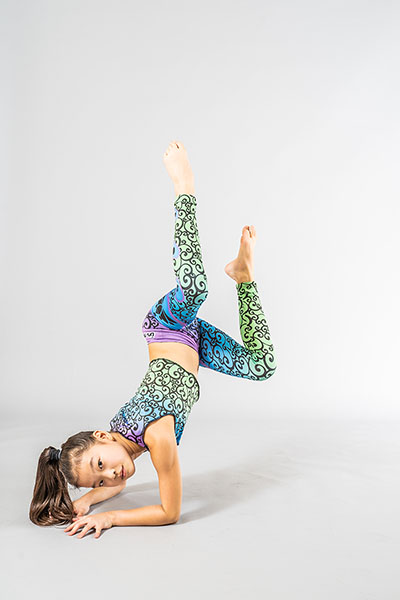
40mm, F/8, 1/200th sec., ISO 250
Click image to view larger
I had created a storyboard of sorts ahead of time, with the poses and movements I wanted the girls to try if they could manage them. The girls were tethered, so they could see the pictures as I was taking them. And they took it all really seriously, especially Caitlin: She would see an image I took of one of her poses and say, "That's not right, let's do that again!"
Facial expressions can lend emotion and drama to a dance photo, so I did try to incorporate my subject's faces where I could. But many of these poses were choreographed ahead of time, and some of them just didn't work with a smiling face thrown in there. That's when you'll see I focused more on body form and on the motion or movement itself.
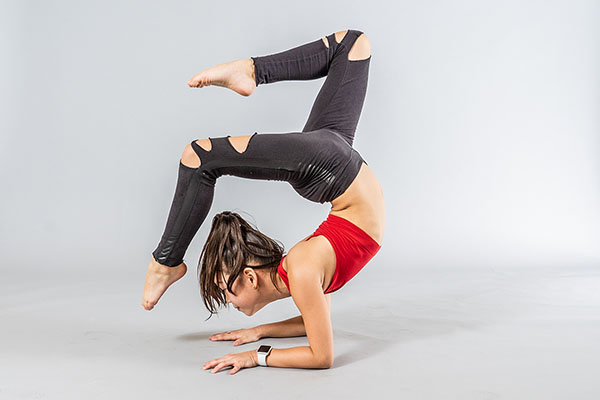
33mm, F/8, 1/200th sec., ISO 250
Click image to view larger
I used back-button focus for capturing these images. This method, where you assign focusing to a button on the back of the camera instead of to the shutter button, may seem confusing at first, but it actually makes things easier with moving subjects once you get the hang of shooting with two fingers. You can press the back button once to lock your focus, or you can keep your finger on it to continuously focus.
Getting these kinds of shots is obviously all in the timing. I would have the girls do the movements a few times before I took the photos so that I could get a handle on when exactly to start shooting. The Sony camera has two continuous-burst modes: one that shoots at 8fps (frames per second), and another even higher at 10fps. Even though I was on a tripod and had a pretty good idea on the timing, using continuous burst helped ensure I captured my subjects right at the pivotal moment, whether that was a leap in the air or right when a girl nailed a difficult pose, like Caitlin balanced on one hand, doing a split in the air.
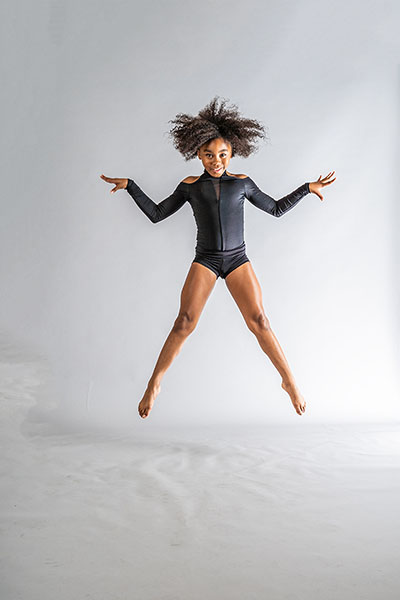
32mm, F/8, 1/200th sec., ISO 250
Click image to view larger
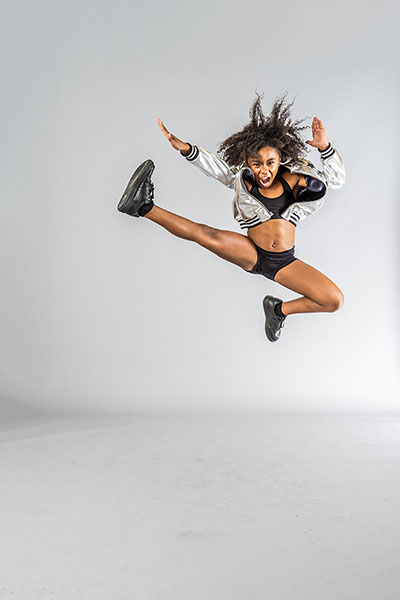
34mm, F/8, 1/200th sec., ISO 250
Click image to view larger
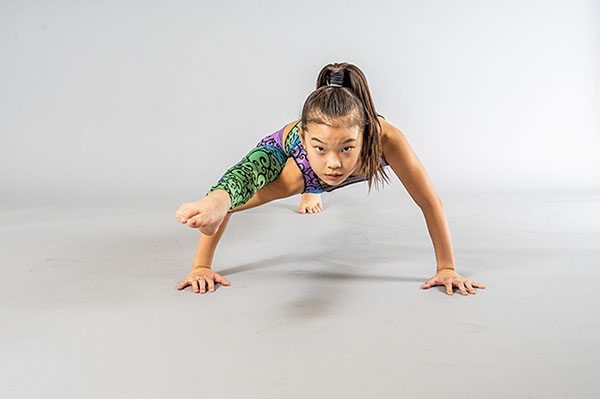
F/8, 1/200th sec., ISO 250
Click image to view larger
Because I was synced up to the strobes, I had to time it correctly so that they had enough cycle time; I didn't just hold the button down and keep shooting. Instead, I took a couple at a time so that the strobes would be able to catch up and fire at just the right time. Because as you can probably surmise from these photos, some of those jumps and poses were in front of my camera in a flash, then they were gone.
To see more of Stephanie Elie's work, go to https://bizzieliving.com.
More Photo Tips | Watch Videos | Learn More About Tamron Lenses | Photo Gallery
